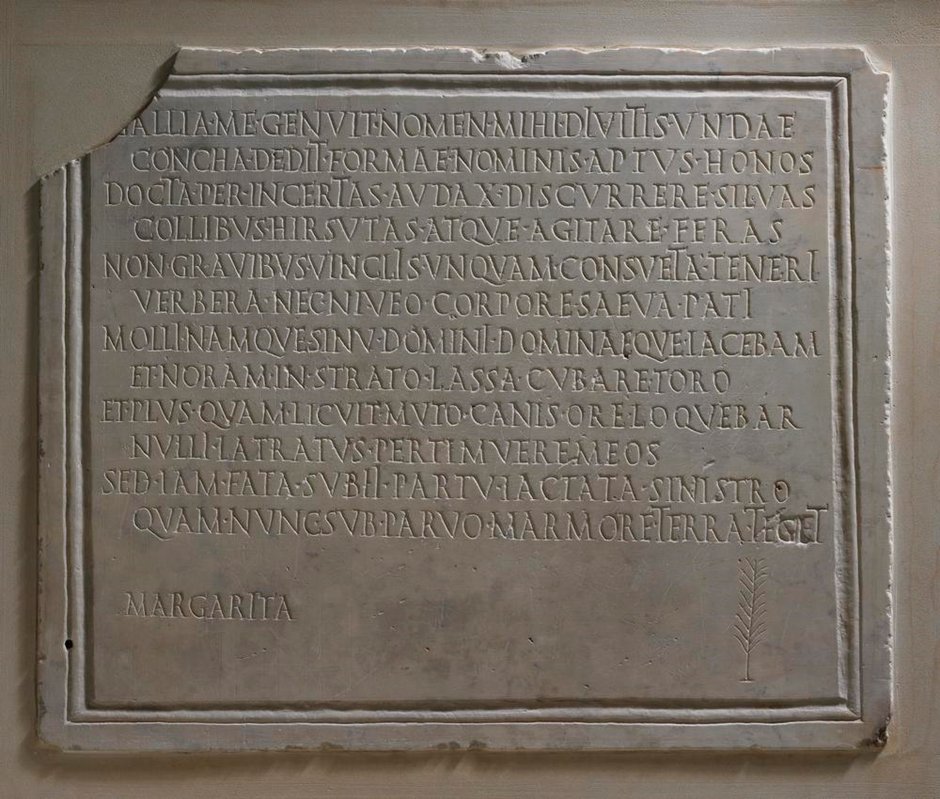How to get URL link on X (Twitter) App

 "...aridus et sicco gurgite piscis erit,
"...aridus et sicco gurgite piscis erit,
 The stone was set up by a girl’s parents to commemorate her short life and brutal end: as the text refers to the murder of a teenage wife by her husband.
The stone was set up by a girl’s parents to commemorate her short life and brutal end: as the text refers to the murder of a teenage wife by her husband.

 "tergaque iactantur crines per eburnea, quaeque
"tergaque iactantur crines per eburnea, quaeque
 Discovered in 1928 and showing evidence of ancient damage, including the break across the main inscription panel, the actual head of Longinus was not found until subsequent excavations in 1996.
Discovered in 1928 and showing evidence of ancient damage, including the break across the main inscription panel, the actual head of Longinus was not found until subsequent excavations in 1996.

 Cunobelinus was a local British ruler who exerted control over a large area of south-east England, ca. AD 10-40, with a capital at Colchester. He claimed to be the son of Tasciovanus, who had ruled a kingdom centred to the north of the Thames.
Cunobelinus was a local British ruler who exerted control over a large area of south-east England, ca. AD 10-40, with a capital at Colchester. He claimed to be the son of Tasciovanus, who had ruled a kingdom centred to the north of the Thames.

 "Idaeique chori; tum vox horrenda per auras
"Idaeique chori; tum vox horrenda per auras
 "nec cantu nec voce minor. felicia lassis
"nec cantu nec voce minor. felicia lassis
 These tablets – some 22 are known – were long dismissed as being intended for “a clientèle unacquainted with Homer himself” (Horsfall, 1979: 34), seen as the type of object appreciated by characters such as Petronius’ Trimalchio. However, more recent work has questioned this.
These tablets – some 22 are known – were long dismissed as being intended for “a clientèle unacquainted with Homer himself” (Horsfall, 1979: 34), seen as the type of object appreciated by characters such as Petronius’ Trimalchio. However, more recent work has questioned this.


 Following their killing of Pertinax on 28 March AD 193, the Praetorian Guard decided to auction off the position of emperor to the highest bidder. Didius Julianus won the day, promising 25,000 sesterces per man (Dio 74.11.5), beginning his brief nine-week reign.
Following their killing of Pertinax on 28 March AD 193, the Praetorian Guard decided to auction off the position of emperor to the highest bidder. Didius Julianus won the day, promising 25,000 sesterces per man (Dio 74.11.5), beginning his brief nine-week reign.

 "...inque caput liquidas arte recurvat aquas;
"...inque caput liquidas arte recurvat aquas;
 "contingat, aliud iussus ad bellum meat;
"contingat, aliud iussus ad bellum meat;
 "sublime classes sidus Argolicas agit;
"sublime classes sidus Argolicas agit;
 "antennaeque gemant, ac sine funibus
"antennaeque gemant, ac sine funibus

 This bronze dupondius, ca. AD 41-50, highlights the ongoing significance of the grain supply to Claudius throughout his reign, a focus that is perhaps unsurprising given the circumstances upon his accession.
This bronze dupondius, ca. AD 41-50, highlights the ongoing significance of the grain supply to Claudius throughout his reign, a focus that is perhaps unsurprising given the circumstances upon his accession.

 The text of the stone is long and written as a poem being spoken by the deceased dog herself. The name of the animal was “Margarita” – ‘Pearl’.
The text of the stone is long and written as a poem being spoken by the deceased dog herself. The name of the animal was “Margarita” – ‘Pearl’. 

 "...a pudet, et narrat scire nefanda meam.
"...a pudet, et narrat scire nefanda meam.

 Marcus Opellius Macrinus briefly reigned as Roman Emperor in AD 217-218, following the murder of his predecessor Caracalla. Indeed, Macrinus - the Praetorian Prefect - was alleged to have had been the instigator of the conspiracy against Caracalla.
Marcus Opellius Macrinus briefly reigned as Roman Emperor in AD 217-218, following the murder of his predecessor Caracalla. Indeed, Macrinus - the Praetorian Prefect - was alleged to have had been the instigator of the conspiracy against Caracalla.

 The piece is a fine example of the ‘Reiter’ (‘Rider’) style of monument, with a representation of a mounted soldier. Standing some 2.25m high, the overall piece is both impressive and energetic.
The piece is a fine example of the ‘Reiter’ (‘Rider’) style of monument, with a representation of a mounted soldier. Standing some 2.25m high, the overall piece is both impressive and energetic.

 "decepere fidem: refugit digitosque per ipsos
"decepere fidem: refugit digitosque per ipsos
 "...erigitur moles, stagna Neronis erant.
"...erigitur moles, stagna Neronis erant.
 While an unassuming little piece, it falls into a category of artefact long associated with the cult of Apollo Smintheus, the deity who at the beginning of the ‘Iliad’ visits a plague upon the Greeks for their desecration of his temple and the mistreatment of his priest, Chryses.
While an unassuming little piece, it falls into a category of artefact long associated with the cult of Apollo Smintheus, the deity who at the beginning of the ‘Iliad’ visits a plague upon the Greeks for their desecration of his temple and the mistreatment of his priest, Chryses.
